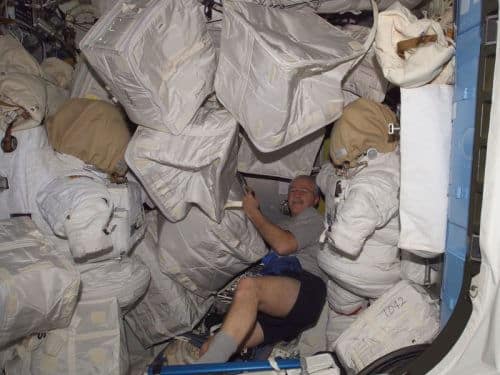In the reader's voice published this week, NASA requests compact solutions for trash, remove biological and physical safety concerns, and recover trapped resources for reuse or for a different use from their original use

Life on the International Space Station requires extreme measures to effectively conserve resources, reduce waste, reuse materials, and recycle water and breathable air. Cargo spacecraft lift approximately 12 tons of supplies each year, which may lead to significant storage challenges in the station's storage areas. As the trash accumulates, the astronauts manually push it into trash bags, and store it temporarily. When about 2 tons of the waste accumulate, they put it in one of the cargo spaceships that return it to Earth or burn it in the atmosphere.
It is likely that the future spacecraft that will fly far beyond Earth's orbit will not be able to launch their garbage in empty cargo spacecraft. Therefore, NASA is turning to industry in the USA so that it advances the technology for compacting trash and develops systems for processing and using the materials in the trash. The agency has issued a call for building a prototype that may also make it to the space station. The call was issued through the agency's Space Partnerships - Next Generation (NextSTEP) department under the section: Logistics - Reducing the volume of waste in space by compression and processing systems.
Storing waste inside a spacecraft not only takes up valuable space, but can also create physical and biological hazards for the crew. Storage also prevents the possibility of extracting valuable resources that could be recycled or put to other use. In the voice of the reader, NASA requests compact solutions for garbage, to remove biological and physical safety concerns, and to recover captured resources for reuse or for a different use from their original use. The companies don't have to start from scratch, NASA has been developing waste management systems since the 80s, including the latest developments, such as the Heat Melt Compactor and "trash to gas".
The development will take place in two phases. In the first phase, selected companies will produce concepts for compacting garbage, concept and processing systems, conduct design reviews with NASA, and demonstrate the ideas using prototypes. During this phase, the companies can request permission to use NASA facilities to perform tests of subsystems. In the second phase, an airborne flight will be developed to demonstrate the capability on the space station as early as 2022.
The deadline for submitting proposals is August 22, 2018.
For information on the NASA website
More of the topic in Hayadan:
